Baluchar Silks of Bengal, Mumbai
The exhibition ‘Sahib, Bibi, Nawab: Baluchar Silks of Bengal 1750–1900’, featuring textiles from the Tapi Collection, is at Chhatrapati Shivaji Maharaj Vastu Sangrahalaya (formerly the Prince of Wales Museum), Mumbai, from 12 December 2014 to 11 January 2015. There will be an inaugural address at the opening, 5.30pm on 11 December by Dr. John Keay, is entitled ‘Indo-warp, Anglo-weft: The Weaver as Chronicle’.
The extracts below are taken from a forthcoming article by Tulsi Vatsal for HALI 182 that explores the origins and use of these expressive Indian textiles.
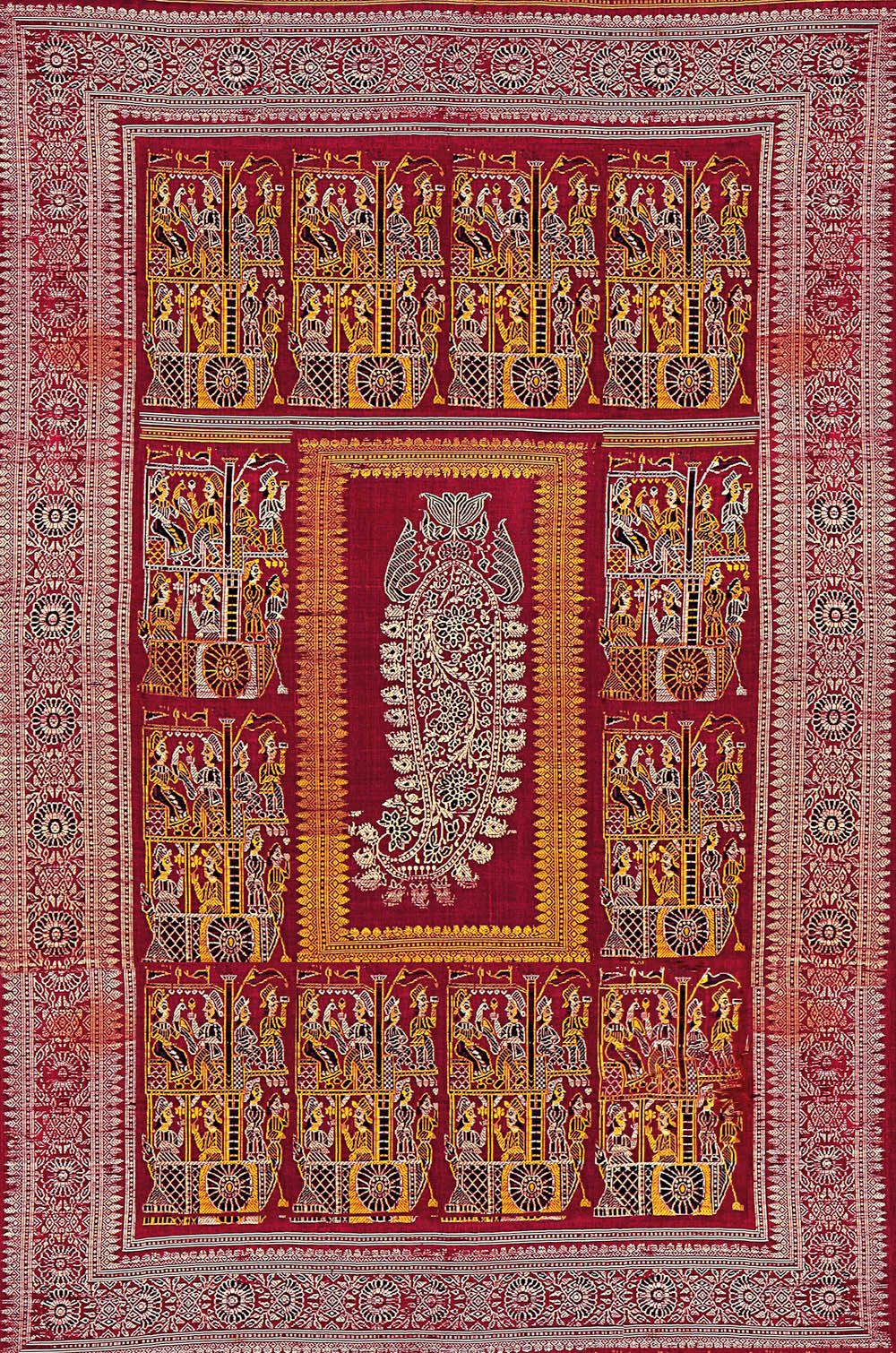
Detail of a Baluchar silk sari, west Bengal, 19th century. The excitement generated by steamships and trains, as well as gadgets like binoculars and cameras, is captured in the vignettes of this sari end. All images, Tapi Collection, Surat
“In the 18th and 19th centuries, Baluchar was an important hub of the thriving silk textile industry in the Murshidabad region, lending its name to a distinctive variety of richly patterned woven silk fabric. However when and why Baluchar textiles got their name remains one of many unanswered questions. Woven from pure silk yarn, without any zari (gold or silver thread brocading), Baluchar butedar saris are acclaimed for their soft, lustrous texture, glowing colours, distinctive motifs, and for the sheer skill of the weavers. Smaller quantities of rumals (square scarves), tablecloths, sashes and shawls were also made.
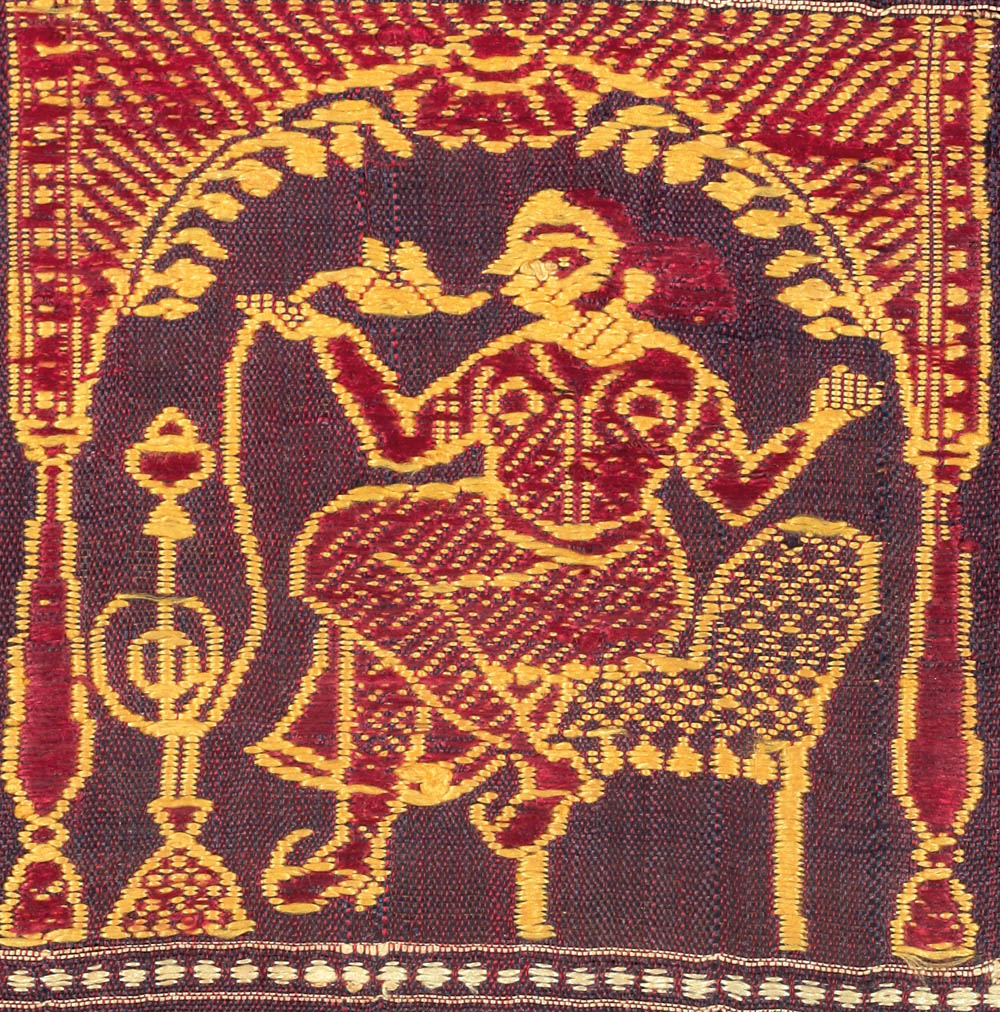
Baluchar anchal fragment detail. Straddling two cultures ― seated on a chair, her legs stylishly crossed, a bibi or courtesan enjoys her hookah.
All Baluchars follow the same principle of patterning. These complex designs were woven on traditional drawlooms using a supplementary patterning weft. Baluchar saris in the Tapi Collection depict men in pyjamas and jamas relaxing against bolsters in upper-class interiors, holding falcons or smoking hookahs. Women sit on chairs. They also smoke, play stringed instruments and amuse themselves with pet peacocks. Englishmen are seen riding horses or elephants and shooting tigers.
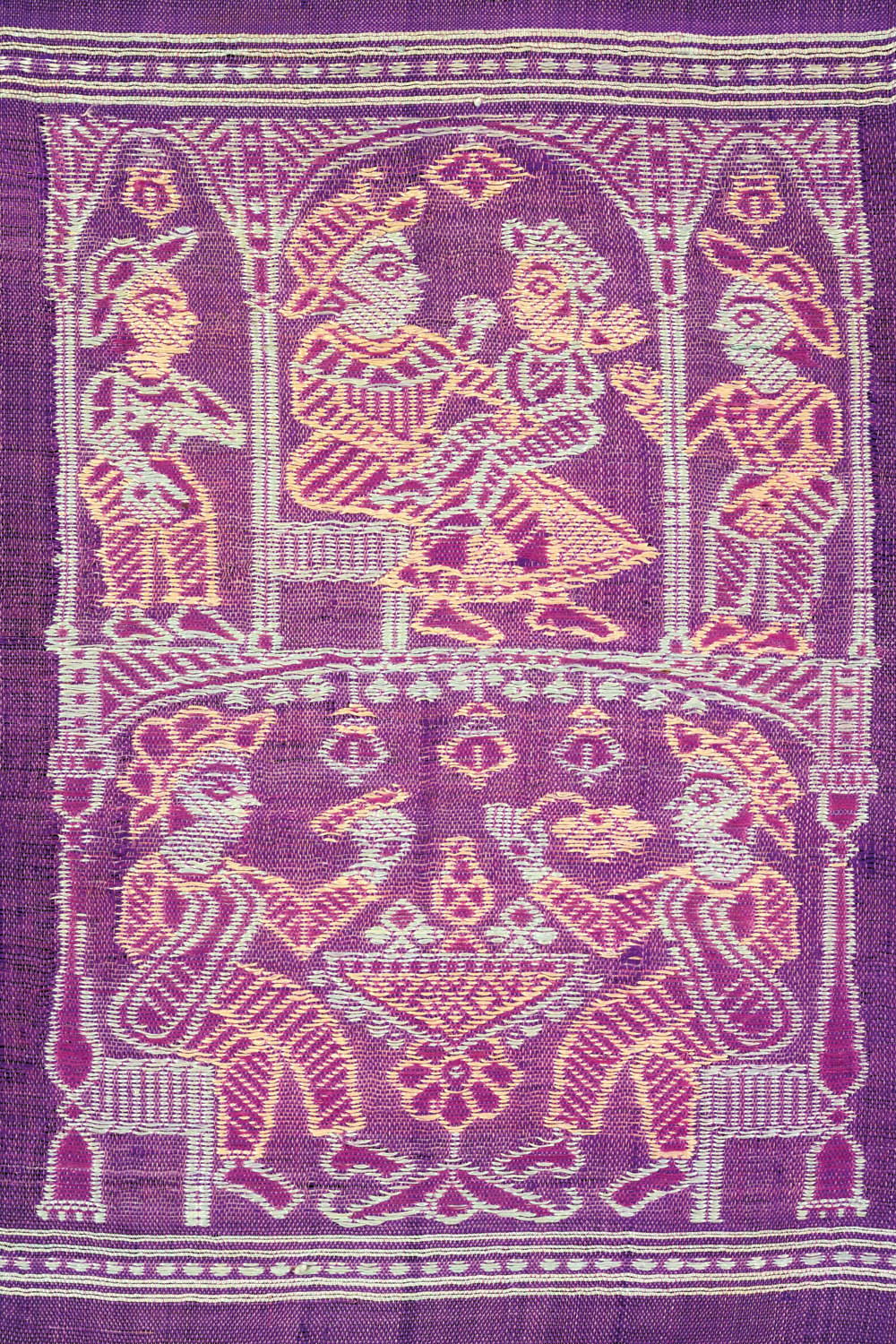
Detail of a Baluchar sari anchal (end panel) fragment showing a European lady with a child on her lap and gents seated across a table.
Despite its long history of raw silk production, silk weaving in Bengal was largely limited to making plain, striped and checked varieties. How then can one explain the emergence, in the early decades of the 18th century, of elaborately figured textiles requiring complex loom technology for the repeat patterning of motifs, at Baluchar and its surrounding villages?
By 1894 there was no more patterned-silk weaving at Baluchar, though it continued in the neighbouring villages that formed part of the ‘Baluchar Circle’, particularly at Bahadurpur. By that year, only six of the complex naqsha drawlooms were left in the Murshidabad district, and only one man knew how to set them up. With his death in the first decade of the 20th century, the classic Baluchar weaving tradition virtually came to an end.”
Read the full article in HALI 182, out soon.


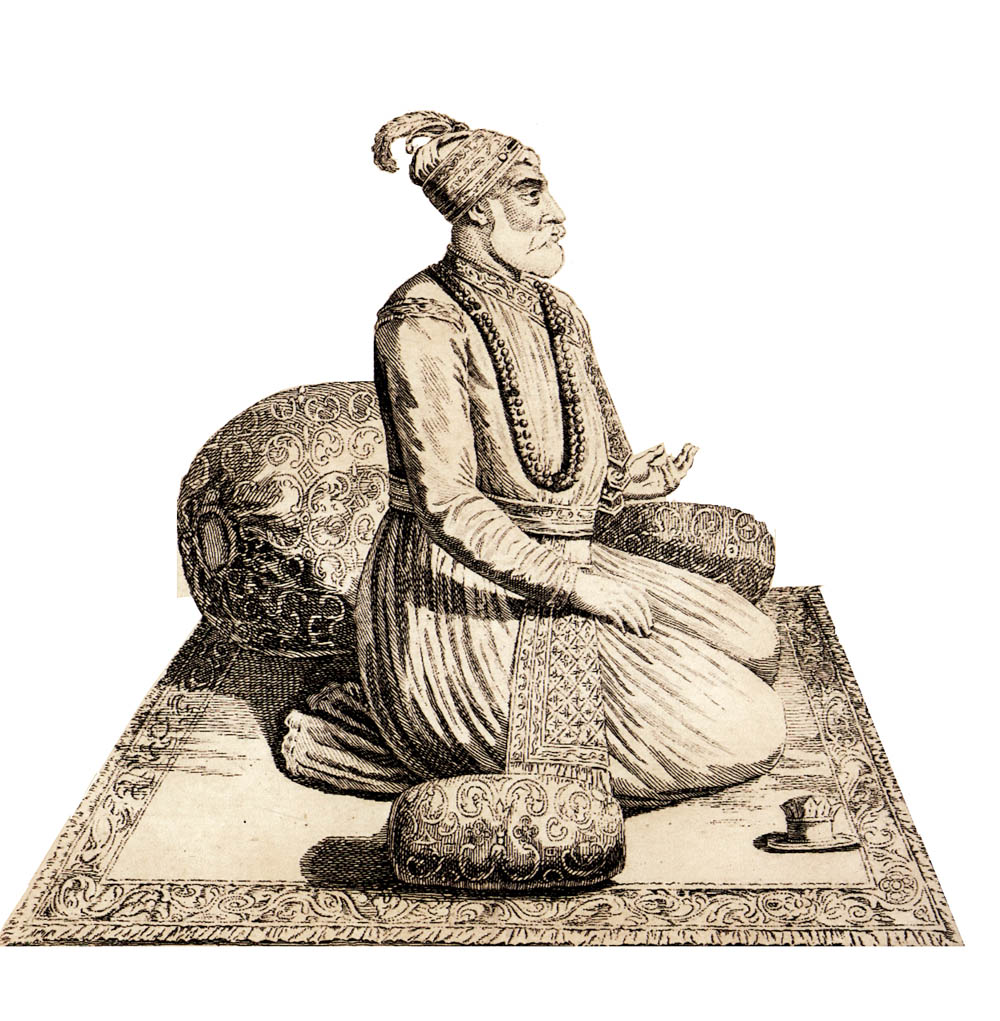
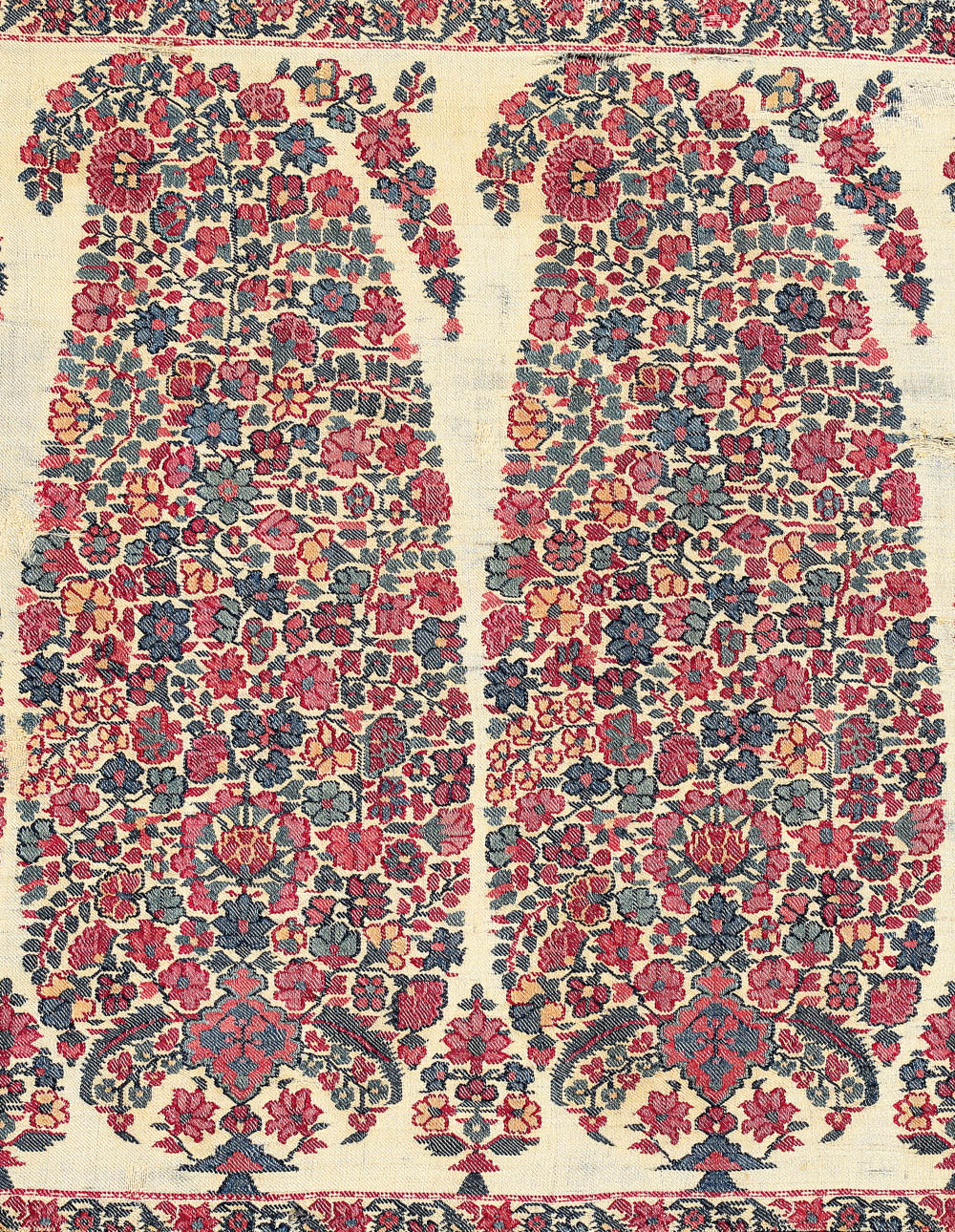





















Comments [0] Sign in to comment